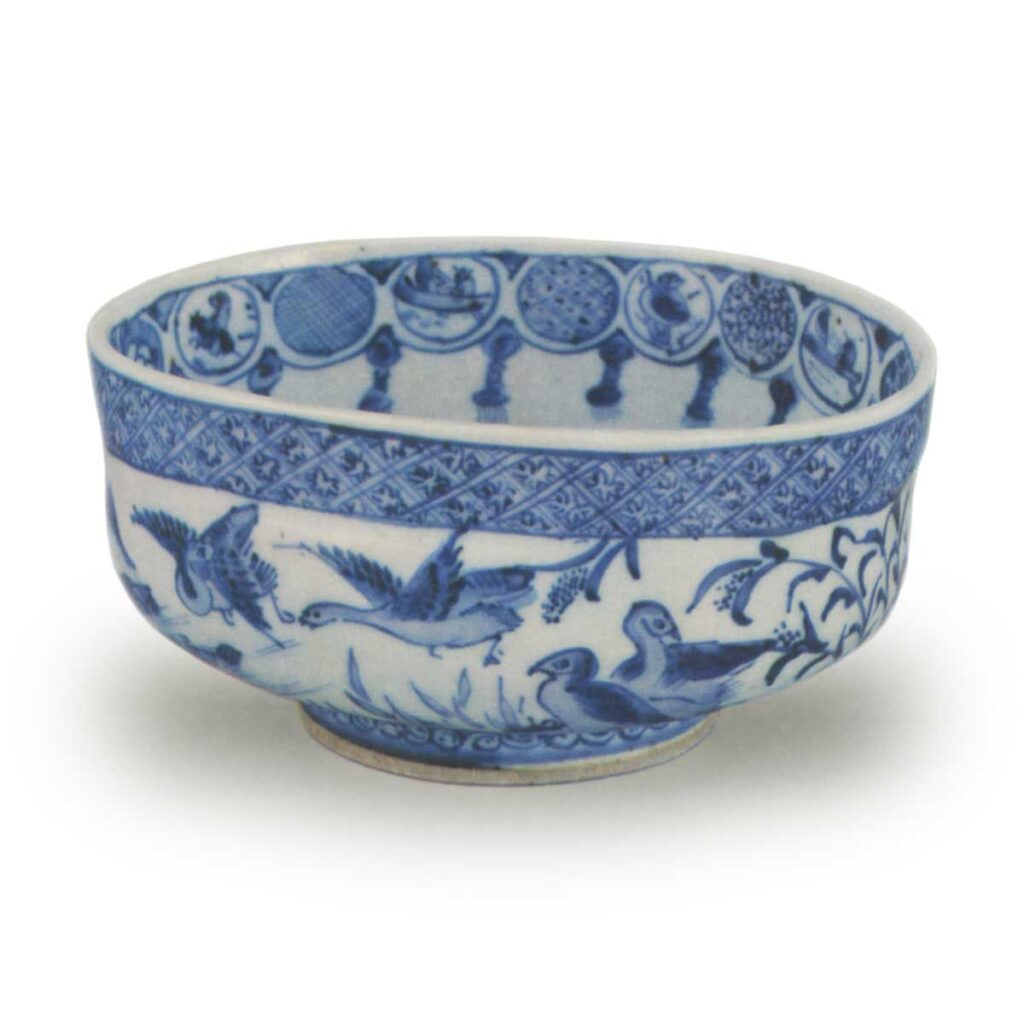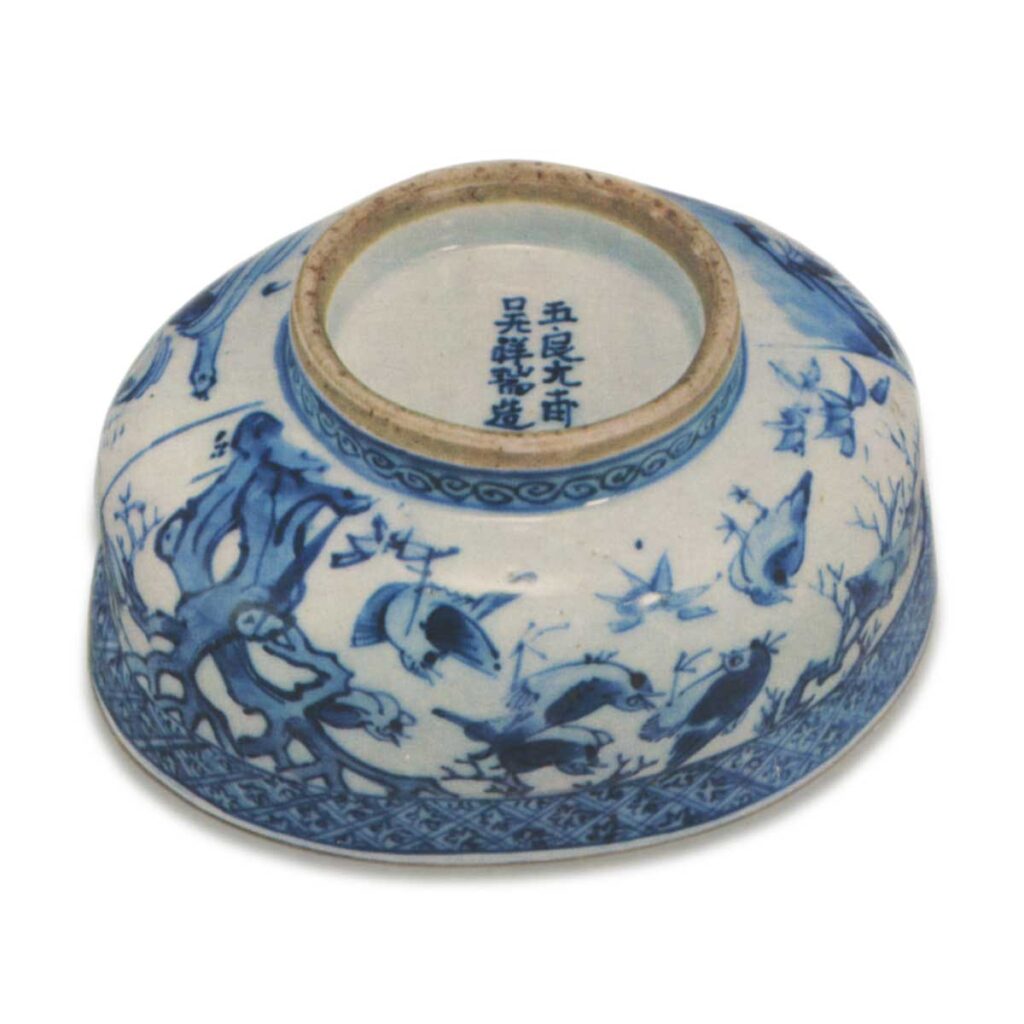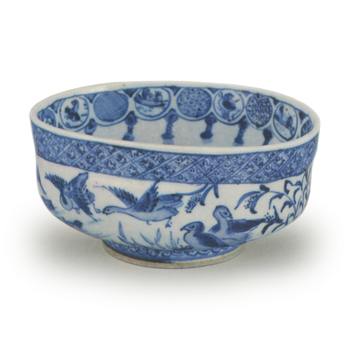

Height: 6.1-6.4cm
Diameter: 9.12.6cm
Outer diameter of foot ring: 6.5cm
Height of foot ring: 1.1cm
We have already mentioned the general outline of the Shourui pattern in the explanation of the polka-dot tea bowl, but here we would like to add a few more details. First of all, the design is so distinctive that it is commonly referred to as the Shourui pattern. it is possible to see a striking characteristic. However, if you examine it carefully, you will see that the various connecting patterns and round patterns commonly used in Shourui, as well as twisted designs and the way the patterns are arranged by drawing a window in the background pattern, can all be seen in the artifacts from the end of the Ming Dynasty and the beginning of the Qing Dynasty, especially around the time of Emperor Shoucheng.
However, in the case of Xiangrui, he added numerous creative touches to these basic designs, and on top of these resourceful and rich combinations, he created new designs that were ever-changing and full of variety. Although the Sui designs were the mother of the designs, the genius of design, Wu Xiangrui, gave birth to the unique Xiangrui patterns. Shourui was known for his habit of covering the entire surface of his vessels with patterns and designs, and this preference for a dense, almost over-the-top style was one of his major characteristics. This flamboyant style was also extremely popular with the townspeople and tea masters of the early Edo period, and it may be the reason why Shourui’s name has become so well known since then. Another characteristic born of Shōzu’s originality was the prolific use of poems and calligraphy stylized into patterns, and as this type of vessel was naturally associated with auspiciousness and merriment, it would surely have been seen as a sophisticated Chinese-style tea utensil by Chinese tea masters. The design of the rim should also be seen as a creative idea of Shourui, and it must have been appreciated as something that further enhanced the feeling of skillfulness. As with the patterns, this rim design also had an influence on the so-called Ko-Kutani ware. The rim design can be seen in the best examples of Nankin-akie, and it is likely that this was done in imitation of Shourui’s secret technique for the Japanese market. The foot of the Shōzu tea bowl is made of a special kind of clay called “sesame clay”, and the rim of the glaze is always cut into a single line. The foot is carefully cut into a crescent shape.
The Kutsu-gata is one of the shapes of Shōsui tea bowls, and examples of the type illustrated include the small bird paintings in the collection of the Fujita Museum of Art and the cockfighting paintings that came from the collection of Masuda Don’ō, both of which are considered to be superb examples of the Kutsu-gata. The design of the Kutsu-gata is something that is not seen in the Naka-uchi, and of course it is probably a copy of the Kutsu-gata that Oribe liked, made using a cutting mold. However, due to the difference between pottery and porcelain, it is inevitable that there is a slight sense of incongruity. The dent in the body of the mandarin orange water jar is also a result of this, and it is likely that it was intended to imitate the so-called Oribe-style deformation, but due to the limitations of the porcelain body, it has become a dent.
On the exterior of this bowl, a band of birch-patterned design runs around the lower rim, and arabesque patterns are spiraled around the foot. The body is divided into two sections, with a picture of waterfowl by a pond on one side and a picture of an old tree with small birds on the other. On the inside, a design of round motifs connected by paths is drawn below the rim, and this is also the same for the two other similar bowls. All of the motifs are drawn with a free and easy touch, and the round motifs and ground patterns in particular are extremely clever. The bright indigo on the pure white background is almost dazzling, and the glaze is smooth and beautiful, with a moist sheen. Even the auspicious tea bowl is worthy of praise as a flower in the shape of a shoe, which is especially admired by the world.
The foot ring is made of the promised sesame clay and is also scraped into the promised kamaboko shape, and the inside and outside glaze edges are also scraped into a single line. The inside of the foot ring is beautifully colored with indigo, and it bears the inscription “Goryo Taifu Goshōzu”.
(Masaaki Mitsuoka)



